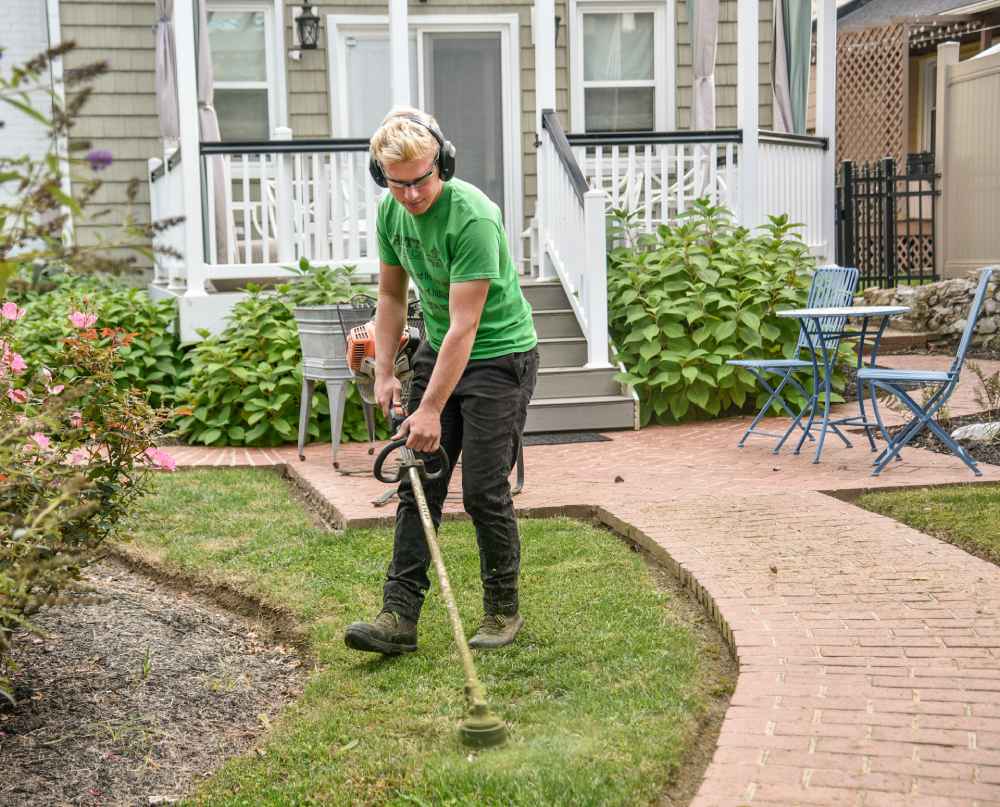Despite the abundance of advice available, keeping healthy, lush grass may be challenging. Let’s sift through the common myths and get to the core of effective lawn care. One such myth is the necessity of daily watering, which often backfires. Addressing these misconceptions will save you time, effort, and money. Periodic lawn aeration can also significantly improve soil health.
Contents
- 1 Introduction to Lawn Maintenance Myths
- 2 Myth 1: Watering Every Day is Necessary
- 3 Myth 2: Grass Clippings Cause Thatch
- 4 Best Practice 1: Aeration is Essential
- 5 Myth 3: Fertilizing Once a Year is Enough
- 6 Best Practice 2: Mow Correctly
- 7 Myth 4: All Weeds Should Be Pulled By Hand
- 8 Best Practice 3: Seasonal Care Matters
- 9 Conclusion
Introduction to Lawn Maintenance Myths
There’s no shortage of advice on maintaining a beautiful lawn. However, not all of it is accurate. By distinguishing fact from fiction, you can achieve a lush, green lawn that’s healthy and easy to maintain. In a world overflowing with quick fixes and old wives’ tales, it’s easy to need clarification about what works regarding lawn care.
Clever marketing and second-hand advice can lead to practices that do more harm than good. To genuinely care for your lawn, you must first debunk these common myths and adhere to tried-and-true best practices.
Myth 1: Watering Every Day is Necessary
One of the most widespread myths is the belief that you must water your lawn daily. In reality, overwatering can do more harm than good. Grassroots need to develop deep systems, and infrequent, deep watering promotes this. It’s best to water deeply and infrequently to stimulate the roots’ deeper soil penetration.
Most lawns only need about an inch of water weekly, including rainfall. Deep watering ensures that the water penetrates at least six inches into the soil, where grassroots can access it. Over time, this helps grass grow more robust and withstand drought better.
Myth 2: Grass Clippings Cause Thatch
Many homeowners rake up every blade of cut grass under the impression that grass clippings contribute to thatch buildup. Quite the contrary! Grass clippings decompose and provide vital nutrients back to the soil. Thatch is a layer of living and dead organic matter that can accumulate on the soil surface, but grass clippings are not to blame.
Thatch tends to form from grass roots and stems, not the leaves. Leaving grass clippings on the lawn decreases the need for extra fertilizers since they replenish the soil with important nutrients. Leaving grass clippings can contribute up to 25% of your lawn’s annual nitrogen needs.
Best Practice 1: Aeration is Essential
Aeration is crucial for a thriving lawn. It alleviates soil compaction and promotes soil air, water, and nutrient movement. This practice is especially vital for heavy-traffic areas.
Regular aeration can help combat soil compaction, making it easier for grasses to thrive. Aerating a lawn entails creating tiny holes in the ground to let nutrients, water, and air into the grass. This encourages stronger, more vivid grass growth and deeper root growth. Aeration is especially beneficial for lawns with heavy clay soil or those subjected to extensive foot traffic.
Myth 3: Fertilizing Once a Year is Enough
Another misconception is that one round of fertilizer is enough to last all year—different times of the year call for other nutrients. For example, nitrogen in the spring promotes grass growth, while potassium in the fall helps prepare your lawn for winter. Successful lawn care requires a balanced approach to fertilization. Spring fertilizers typically contain higher amounts of nitrogen to encourage green, leafy growth.
On the other hand, fall fertilizers often contain more potassium, which helps strengthen the grass and prepare it for the cold winter months. An effective fertilization schedule usually involves multiple applications throughout the year to ensure the lawn gets the proper nutrients at the right time.
Best Practice 2: Mow Correctly
Proper mowing techniques are essential to maintain a healthy lawn. Cutting too short can stress the grass while mowing too infrequently can lead to more buildup of grass clippings. The golden rule is to cut one-third of the grass blade at once.
Mowing at the correct height helps the grass develop a deep root system and shades the soil, reducing water loss and weed growth. The ideal mowing height varies by grass type but generally falls between 2.5 and 3.5 inches. Regular mowing at the right height keeps your lawn healthy and encourages denser, more resilient grass.
Myth 4: All Weeds Should Be Pulled By Hand
Hand-pulling weeds can be effective for small areas, but more efficient methods exist for more extensive lawns. Utilizing a combination of pre-emergent herbicides and post-emergent treatments can be more effective. This approach controls weed problems without damaging your grass. Weeds fight your lawn for sunshine, water, and nutrition.
While hand-pulling might be satisfying, it’s labor-intensive and often not feasible for large infestations. Herbicides are used before weeds sprout to stop their seeds from sprouting, but herbicides applied after weeds have already sprouted destroy the plants. A strategic, integrated weed management plan can keep your lawn mostly weed-free without requiring exhaustive manual labor.
Best Practice 3: Seasonal Care Matters
A seasonal lawn care approach ensures your grass receives what it needs throughout the year. It means adjusting watering schedules, fertilizers, and even mowing heights. You may maintain the condition of your lawn in different ways during each season.
For example, your lawn will likely need more frequent watering during the summer due to higher temperatures. In the fall, erosion and aeration are essential to preparing your lawn for winter. Tailoring your lawn care practices to the season ensures a healthier and more resilient lawn year-round.
Conclusion
Dispelling common lawn maintenance myths and adopting best practices can transform your yard into a lush, green paradise. Remember, knowledge and proper techniques are your best tools. By following these guidelines, you’ll spend less time battling your lawn and more time enjoying it.



